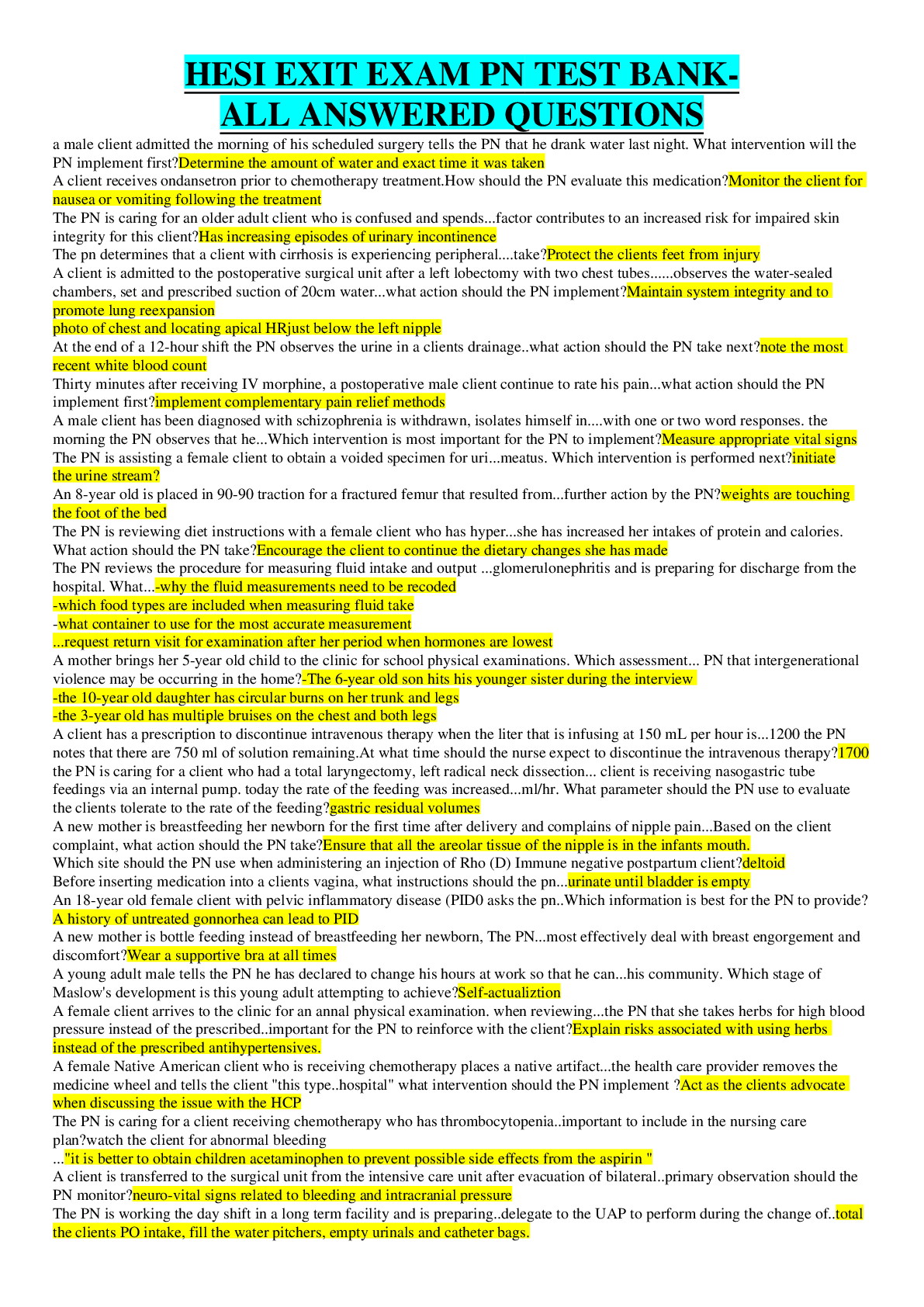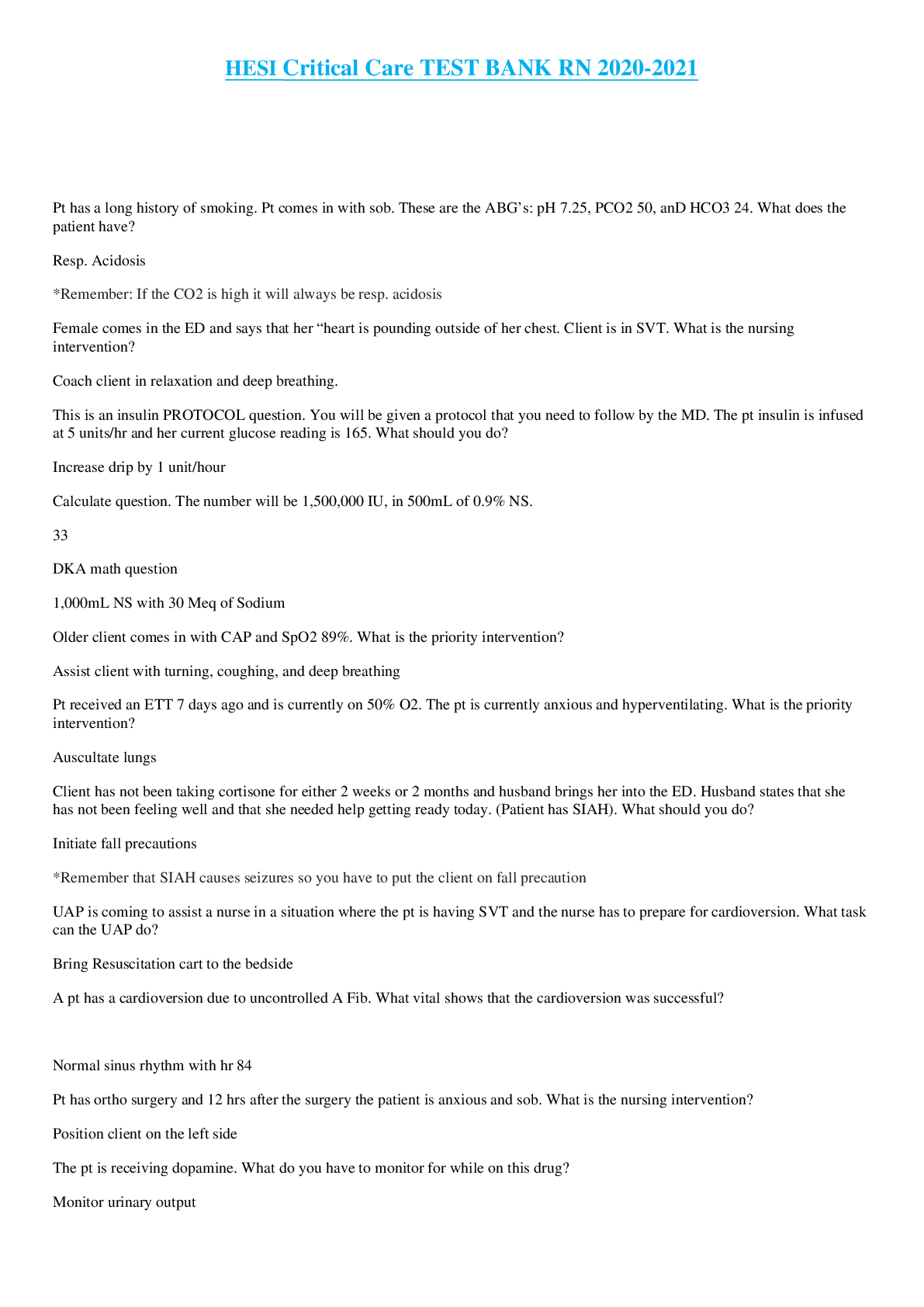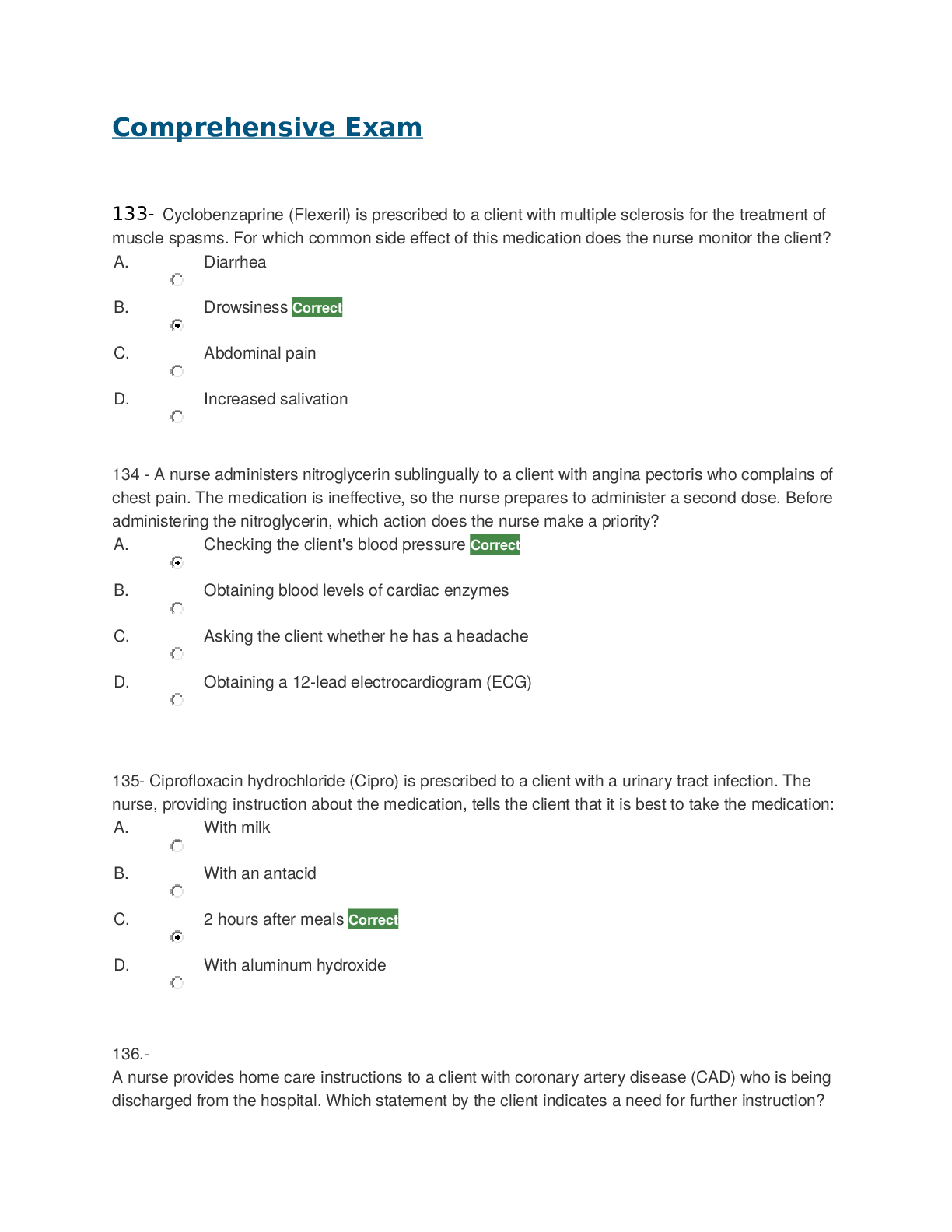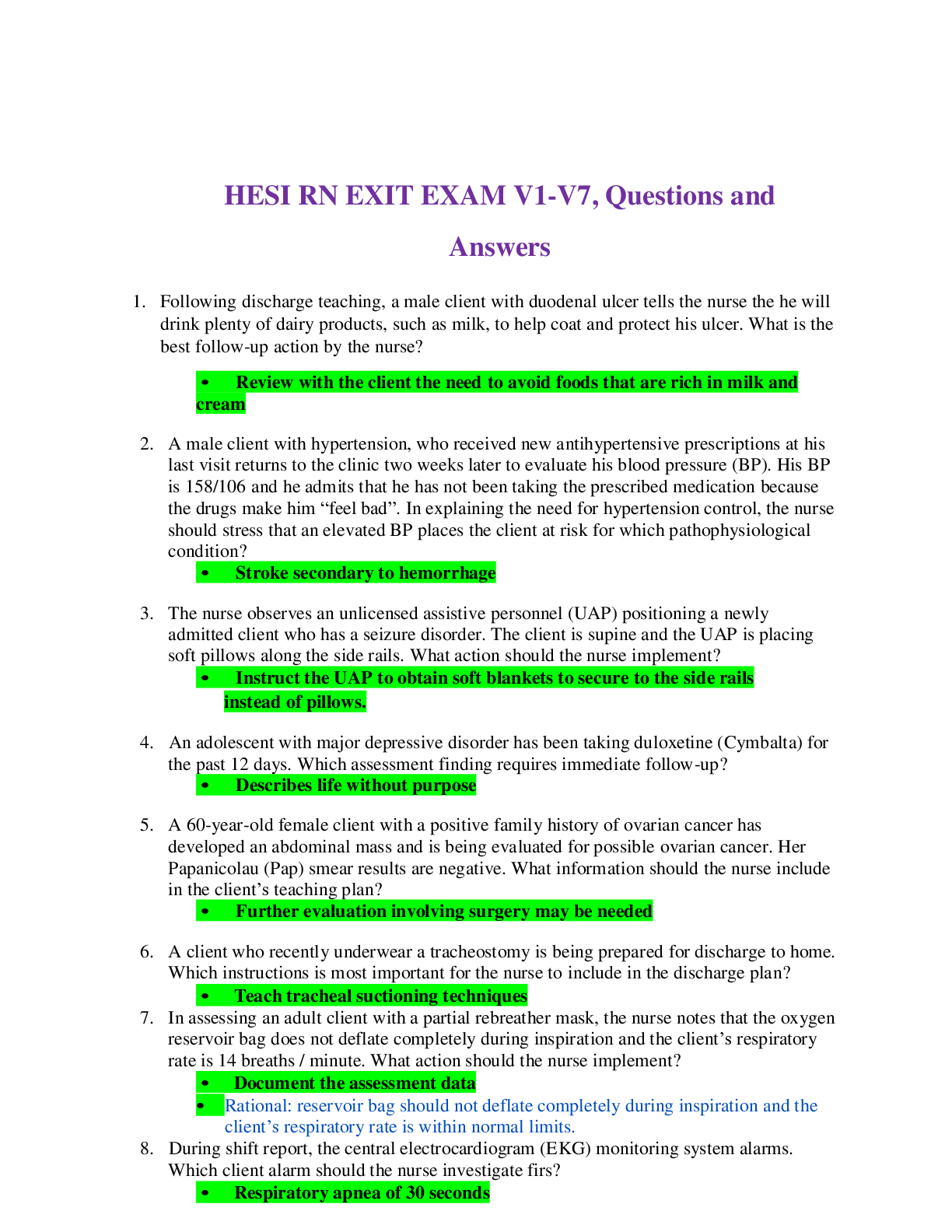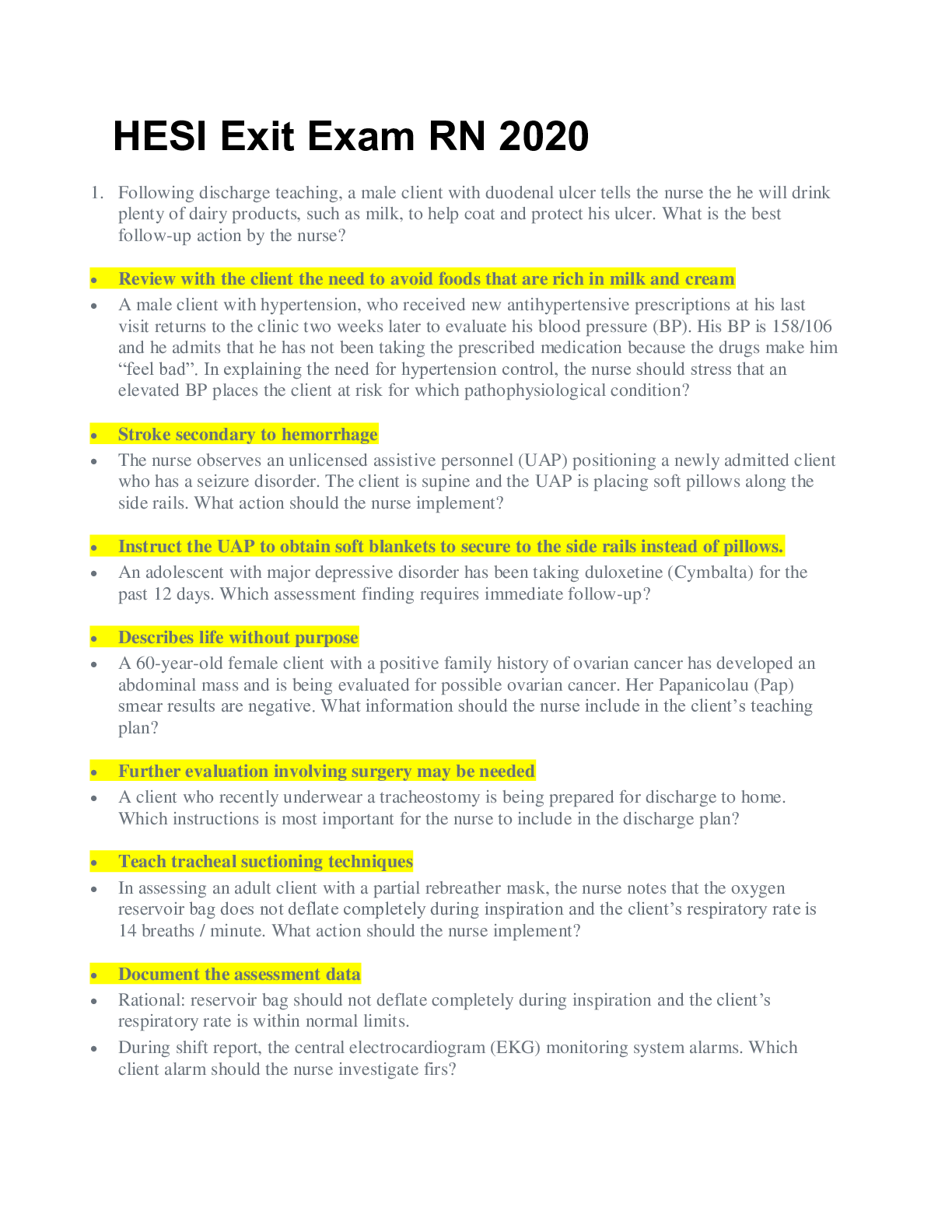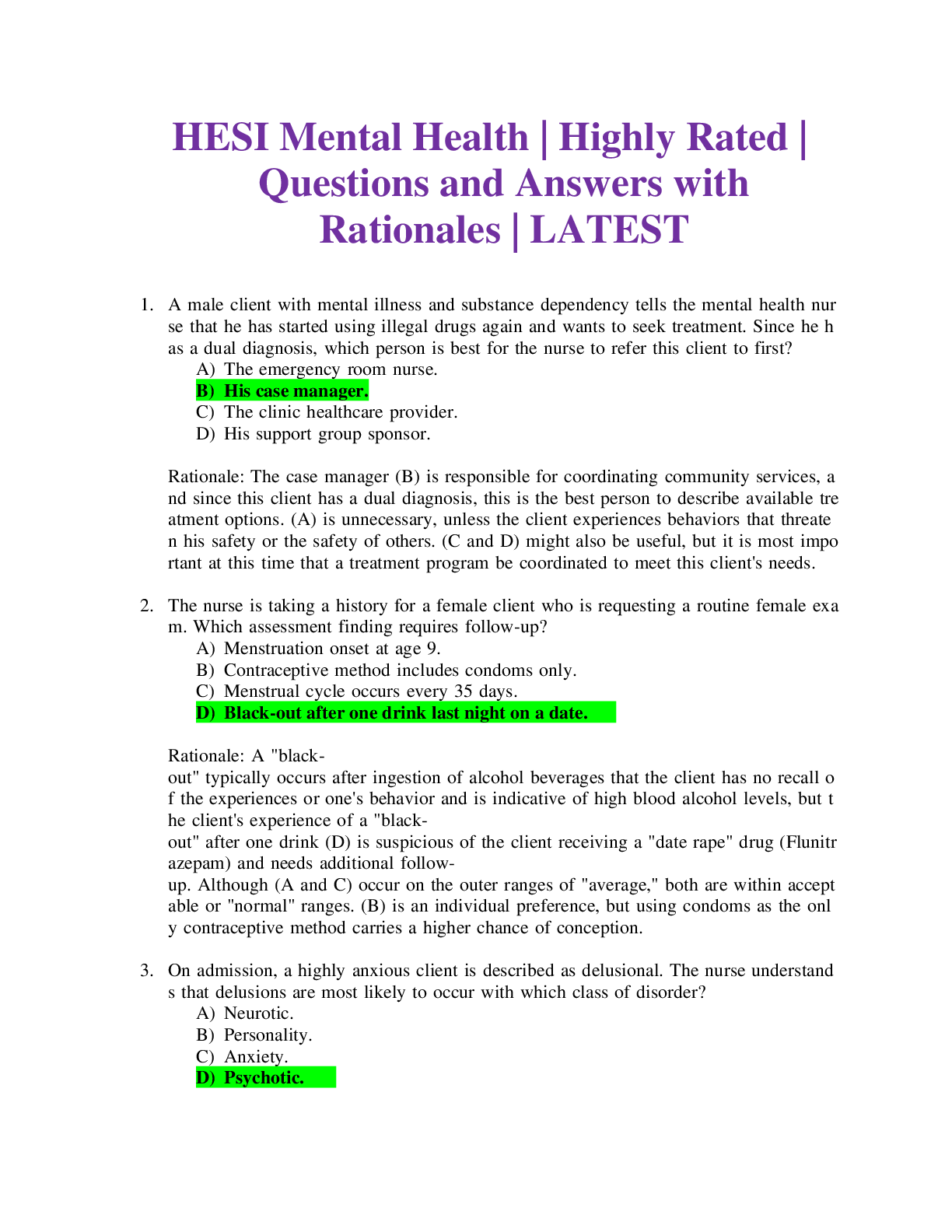*NURSING > HESI > HESI A2: BIOLOGY. From the Test v1 and v2. 100 Of the most exam-essential and tested Q&A. See questi (All)
HESI A2: BIOLOGY. From the Test v1 and v2. 100 Of the most exam-essential and tested Q&A. See questions list in the Description
Document Content and Description Below
HESI A2: BIOLOGY. From the Test v1 & v2 (100 Questions and Answers) 1. Which movement requires carrier protein but noo direct cellular energy? 2. Which term denotes the movement of glucose molec... ules from an area of lower concentration to an area of higher concentration? 3. Plasmolysis is a term describing? 4. The movement of substances from lesser concentration to higher concentration is called? 5. Which particular structure is present in both eucaryotic and prokaryotic cells? 6. Plant cells differ from animal cells in? 7. Which cell type is characterized by the lack of true nucleus and the absence of membrane-bound organelle? 8. Which organelle is associated with hydrolytic enzymes and is sometimes reffered to as a "suicide bag" 9. Pinocytosis is the process of? 10. The plasma membrane of the eurokaryotic cell determines selectively which substances can enter and leave the cell. Such a membrane is said to be ? 11. What primarily determines the shape of cells that lack cell walls? 12. Which pair of organelles is responsible foe energy supply to eurokaryotic cells? 13. Whit which organelle is the synthesis of ATP associated? 14. The plasma membrane is soluble to? 15. The process whereby muscle cell produce lactic acid is called? 16. During aerobic respiration, which one of the following substances is released? 17. Noncyclic-photophosphorylation takes place inside the? 18. The dark reaction of photosynthesis takes place in ? 19. Aerobic cellular respiration is more important to sustaining life than anaerobic because it produces? 20. Which organelle is responsible for oxygen production? 21. An organic catalyst that enhances the chemical reaction is called ? 22. The first stage of aerobic cellular respiration is? 23. Glycolysis occurs in the ? 24. For the aerobic pathway, electron transport systems are located in the ? 25. Codominance occurs when? 26. Mitosis in a single human cell usually results in the formation of ? 27. Meiosis in a single human cell usually results in the formation of ? 28. If you reproduce sexually, you produce gamets via? 29. If you reproduce asexually, you produce offspring via? 30. What type of allele is expressed in the phenotype of only a homozygous individual? 31. The sex of a human child is determined by the sex chromosome from? 32. Cell division occurs most rapidly in? 33. Which blood type would be a universal donor? 34. Passage of water through the membrane of a cell is called ? 35. Which term includes all others? 36. The kreb cycle produces? 37. The presence of which substance is most important for all cell activity ? 38. The basic structure of a cell membranes is a ? 39. Cytoplasmic structures that contain powerful hydrolysis enzymes, which could lead to cell destruction in the absence of surrounding membranes, are? 40. Organic substances made up of several amino acids bound together are? 41. The smallest known microorganisms are? 42. The end product of protein metabolism is ? 43. Carbohydrates are absorbed into the blood as ? 44. The substance basic to life is? 45. The body obtains most of its nitrogen from ? 46. The basic unit of living organism is ? 47. The diffusion of water through a semipermeable membrane is known as ? 48. The process in which carbon dioxide and water are combined under the influence of light in green plants is called ? 49. A protein substance that initiates and accelerates a chemical reaction is called ? 50. Amino acids that cannot be manufactured by the body are called ? 51. The body's continual response to changes in the external and internal enviroment is called ? 52. The ability of a cell to reproduce is called ? 53. The part of the cell necessary for reproduction is the ? 54. Proteins are polymers of ? 55. In cellular metabolism glycolysis ? 56. Cellular proteins are synthesized in ? 57. In eukaryotic cells, the phase of division that produces two daughter cells is ? 58. Some substances are transported across cell membranes by proteins known as ? 59. The cellular organelle where respiratory reactions for the release of energy occurs is a ? 60. The most efficient cellular respiratiry process, in terms of energy-yield per molecule of glucose, is ? 61. A cellular organelle found in typical plant cells but not in typical animal cells is the ? 62. Every cell contains ? 63. The two organic substances present in chromosomes are ? 64. Genes may be defined as ? 65. The dense mass of ribonucleic acid found within the nucleus is the ? 66. The endoplasmic reticulum may be described as a ? 67. The lysosomes of a cell contain many ? 68. The mitochondria of the cell are best known as the organelles where ? 69. The flagella of human cells cause ? 70. During the process of diffusion 71. The plasma membrane is a semipermeable membrane because it ? 72. In active transport, chemical substances move from a region of low concentrationto one of high concentration, and therefore they require ? 73. Phagocytosis is a form of endocytosis in which? 74. Virtually all chemical reactions of the cell are catalyzed by ? 75. The energy is released from an ATP molecule when ? 76. Interphase is the phase of a cell cycle in which ? 77. Chromatids, chromosomes, and chromatin are all simillar to one another because ? 78. The codon is a three-base group of nucleotides that specifies ? 79. Protein synthesis in the cell could not occur in the absence of ? 80. A molecules of messenger RNA contains ? 81. Which of the following is the structure of the male reproductive system that stores spermatozoa during the maturation process? A) vas deferens B) scrotum C) epididymis D) testicular artery 82. Which of the following types of hormones stimulates a chemical response to a target cell by diffusing through the cell membrane to bind to the receptors inside the cell? A) fat-soluble hormones B) amino acid derivatives C) hydrophilic hormones D) water-soluble hormones 83. Which of the following is an example of human error in an experiment? A) an imperfectly calibrated scale B) contaminating a sterile sample by breathing on it C) a draft in the laboratory slightly changing the temperature of a liquid D) failure to account for wind speed when measuring distance traveled 84. Within the biologic hierarchic system of organization, which of the following is least inclusive? A) phylum B) order C) kingdom D) species 85. In the scientific process, which of the following is a statement or explanation of certain events or happenings? A) hypothesis B) observation C) experiment D) conclusion 86. Why is polarity the most important characteristic of water? A) the results of the polarity are hydrogen bonding, a high specific heat value, and its versatile solvent properties B) the results of the polarity are covalent bonding, a low specific heat value, and its versatile solvent properties C) the results of the polarity are ionic bonding, a high specific heat value, and its versatile solvent properties D) the results of the polarity are hydrogen bonding, a low specific heat value, and its versatile solvent properties the results of the polarity are hydrogen bonding, a high specific heat value, and its versatile solvent properties 87. Athletes are often concerned with the question of what they need in their diets to increase muscle mass and strength. What biologic molecule would you recommend that would accomplish this? A) carbohydrates B) proteins C) lipids D) nucleic acids 88. Which organelle would you expect to be present in a cell responsible for detoxifying multiple molecules? A) rough er B) smooth er C) lysosome D) golgi apparatus 89. A cell from heart muscle would more than likely contain an unusually high proportion of: A) lysosomes B) mitochondria C) mRNA D) ribosomes 90. The sum of all chemical reactions that occur in an organism is: A) product B) respiration C) metabolism D) synthesis 91. A cell that does not contain membrane-bound organelles or a defined nucleus would be classified as: A) eukaryotic B) embryonic C) prokaryotic D) symbiotic 92. The two catabolic pathways that lead to cellular energy production are: A) fermentation and protein synthesis B) cellular respiration and glycolysis C) fermentation and glycolysis D) cellular respiration and fermentation 93. Which part of cellular respiration produces the greatest amount of ATP? A) electron transport chain B) glycolysis C) citric acid cycle D) fermentation 94. When plants do not receive enough water, their photosynthetic rate drops. This is because: A) water is a raw material for the light reactions in photosynthesis B) carbon dioxide is not available C) water provides the carbon atoms used to make sugar D) not enough oxygen is produced to keep fermentation running 95. How does asexual reproduction differ from sexual reproduction? A) asexual reproduction results in all cells being identical to the original cell; sexual reproduction results in half of the cells being identical to the original cell B) asexual reproduction results in two cells that contribute genetic material to daughter cells, resulting in significantly greater variation C) sexual reproduction involves two cells that contribute genetic material to daughter cells, resulting in significantly greater variation D) sexual reproduction involves one cell that yields all cells produced to be identical 96. Why is it important for cells to undergo mitosis? A) mitosis allows for reproduction with male and female gametes B) mitosis increases variation within the species C) mitosis produces cells that are different from the parent cell D) mitosis produces cells for growth and repair of body tissue 97. 72 chromosomes undergo meiosis. How many chromosomes will be in each gamete? A) 18 B) 36 C) 72 D) 144 98. Which of the following shows how information in transformed to make a protein? A) DNA-RNA-protein B) gene-chromosome-protein C) ATP-amino acid-protein D) RNA-DNA-protein 99. Which of the following describes the gene in which one allele takes a different form from another? A) phenotype B) heterozygous C) homolog D) homozygous [Show More]
Last updated: 1 year ago
Preview 1 out of 12 pages
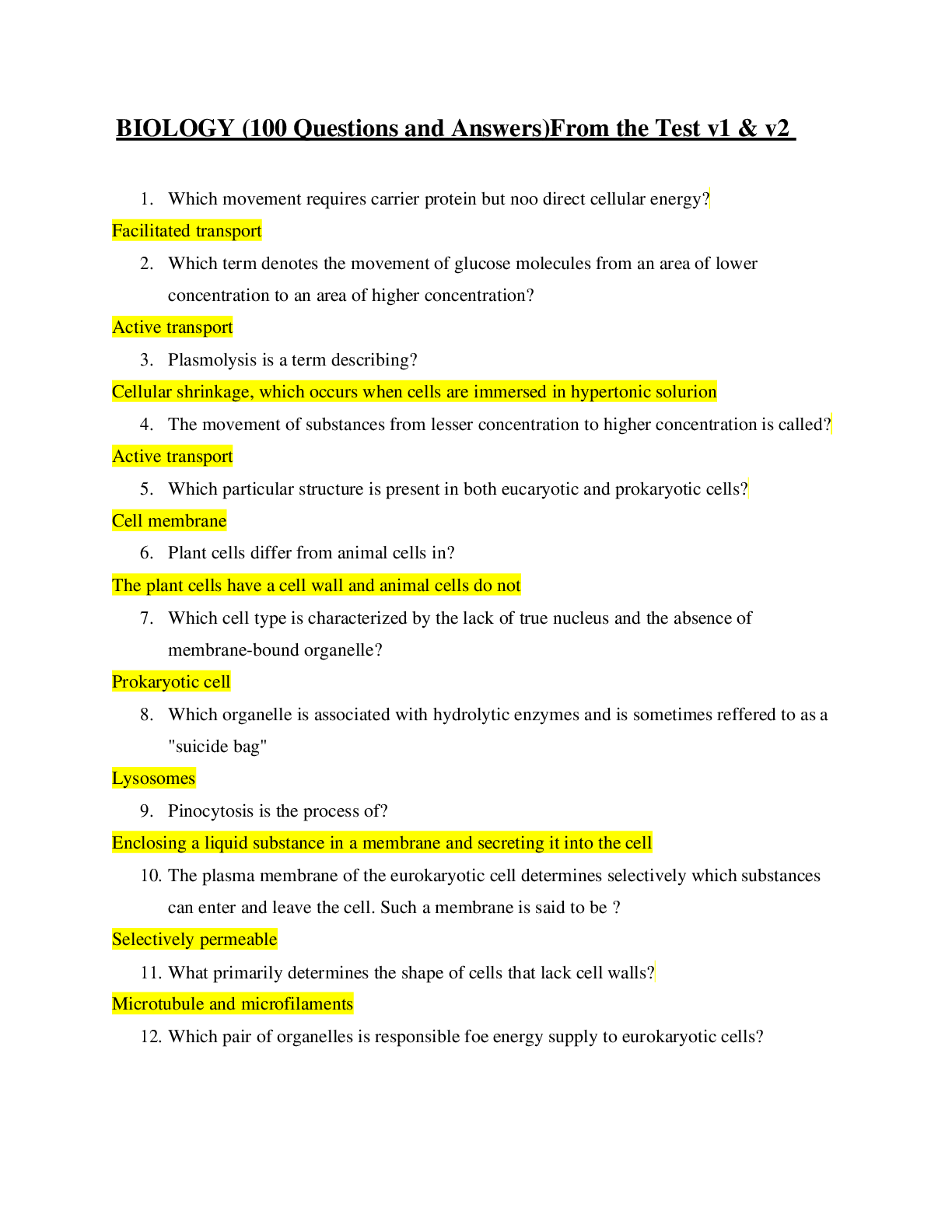
Reviews( 0 )
Document information
Connected school, study & course
About the document
Uploaded On
Apr 04, 2021
Number of pages
12
Written in
Additional information
This document has been written for:
Uploaded
Apr 04, 2021
Downloads
1
Views
92


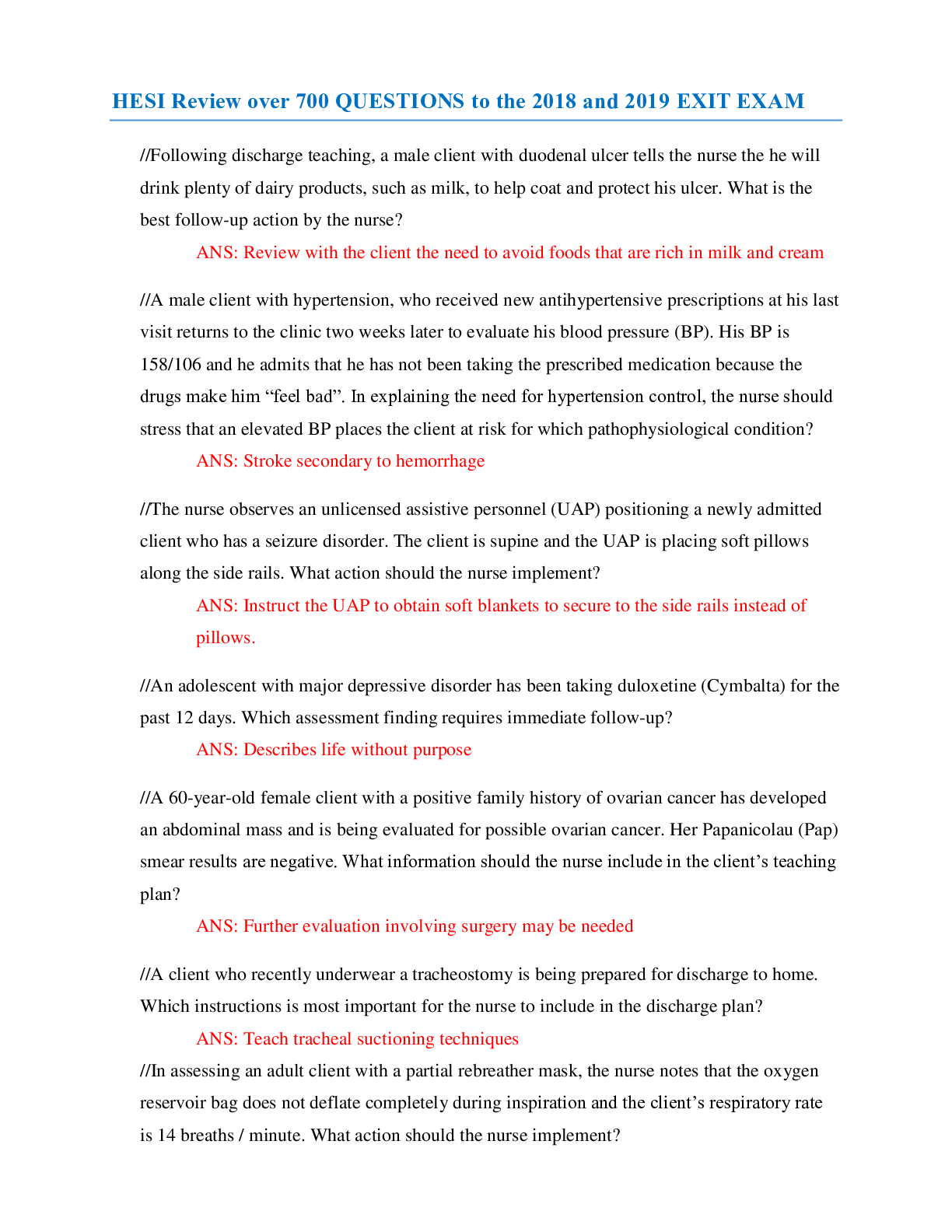

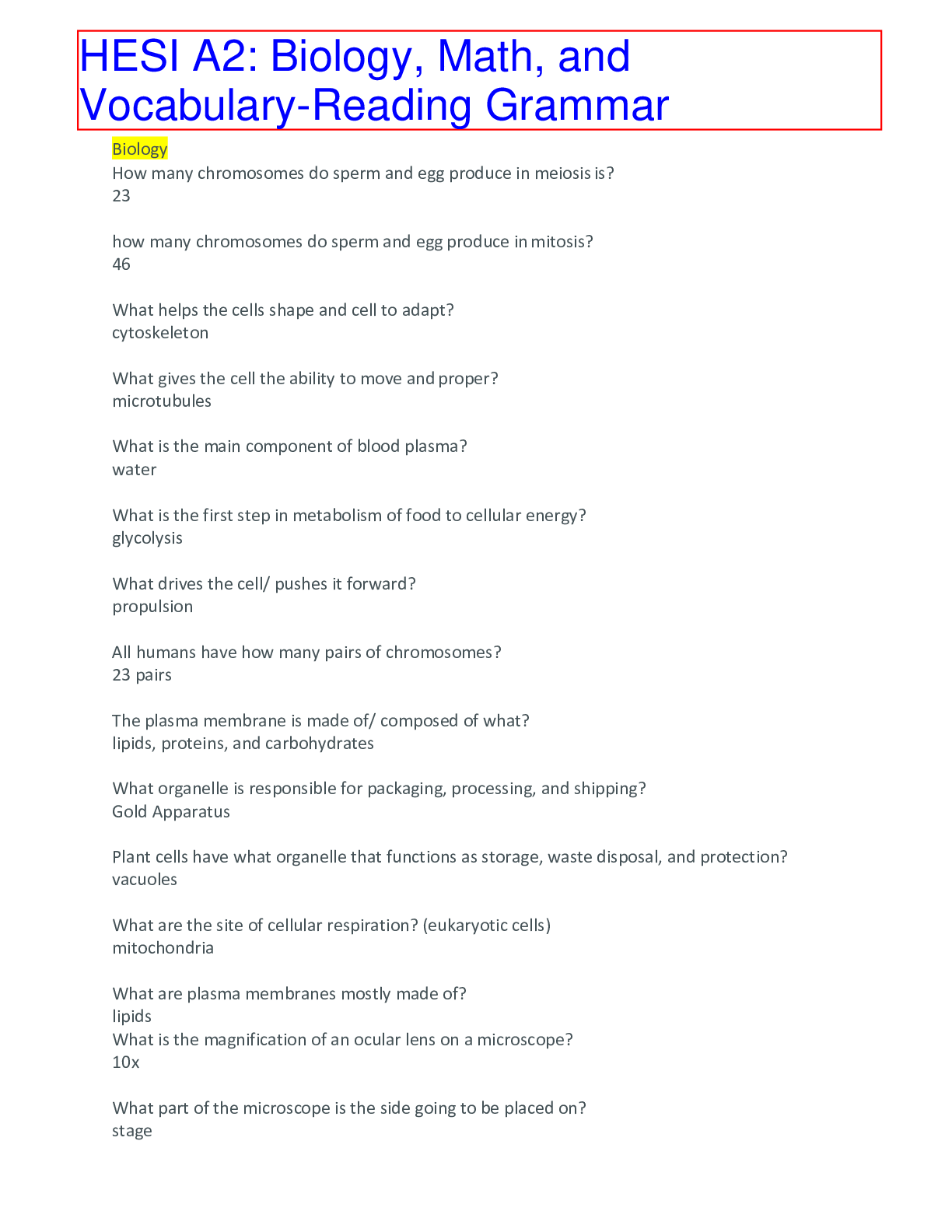
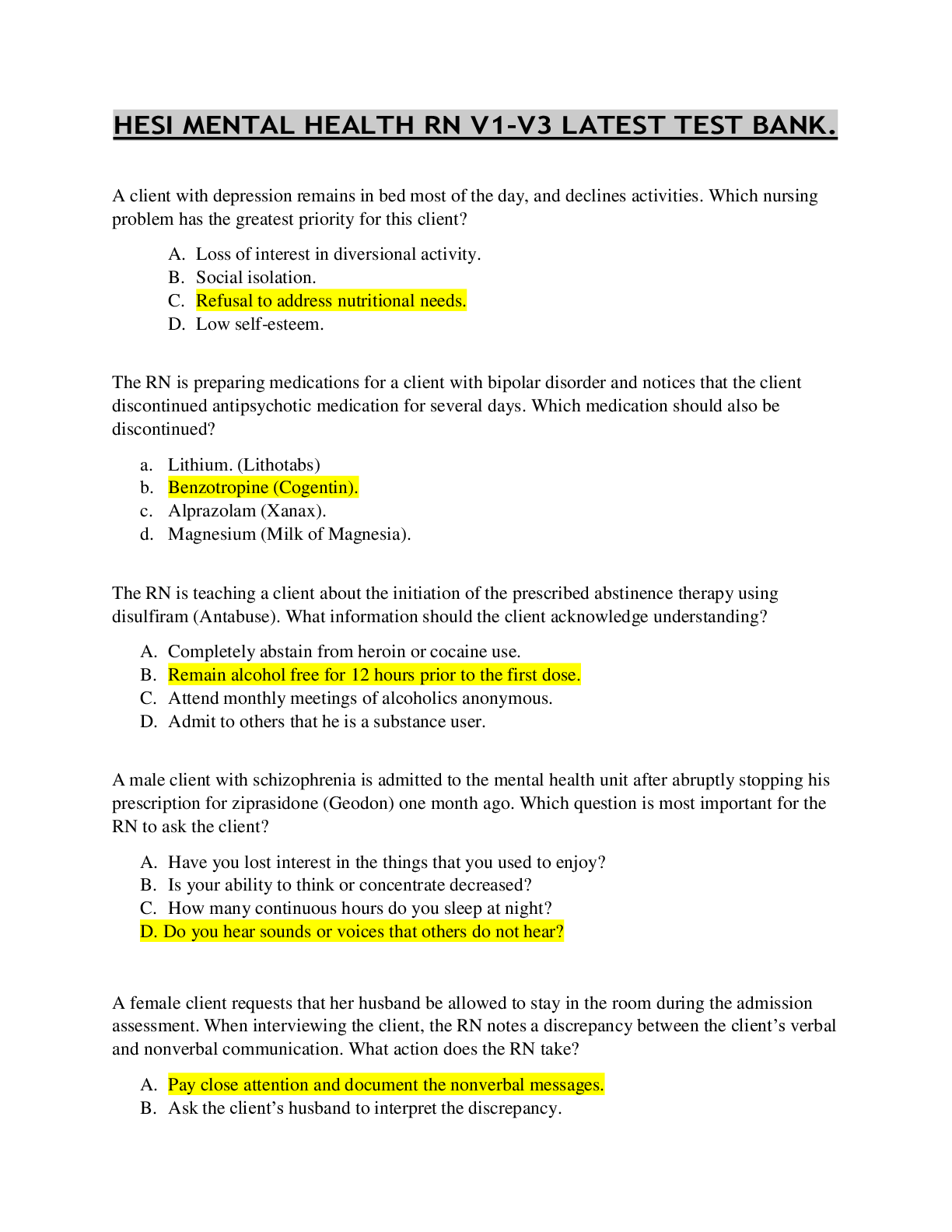
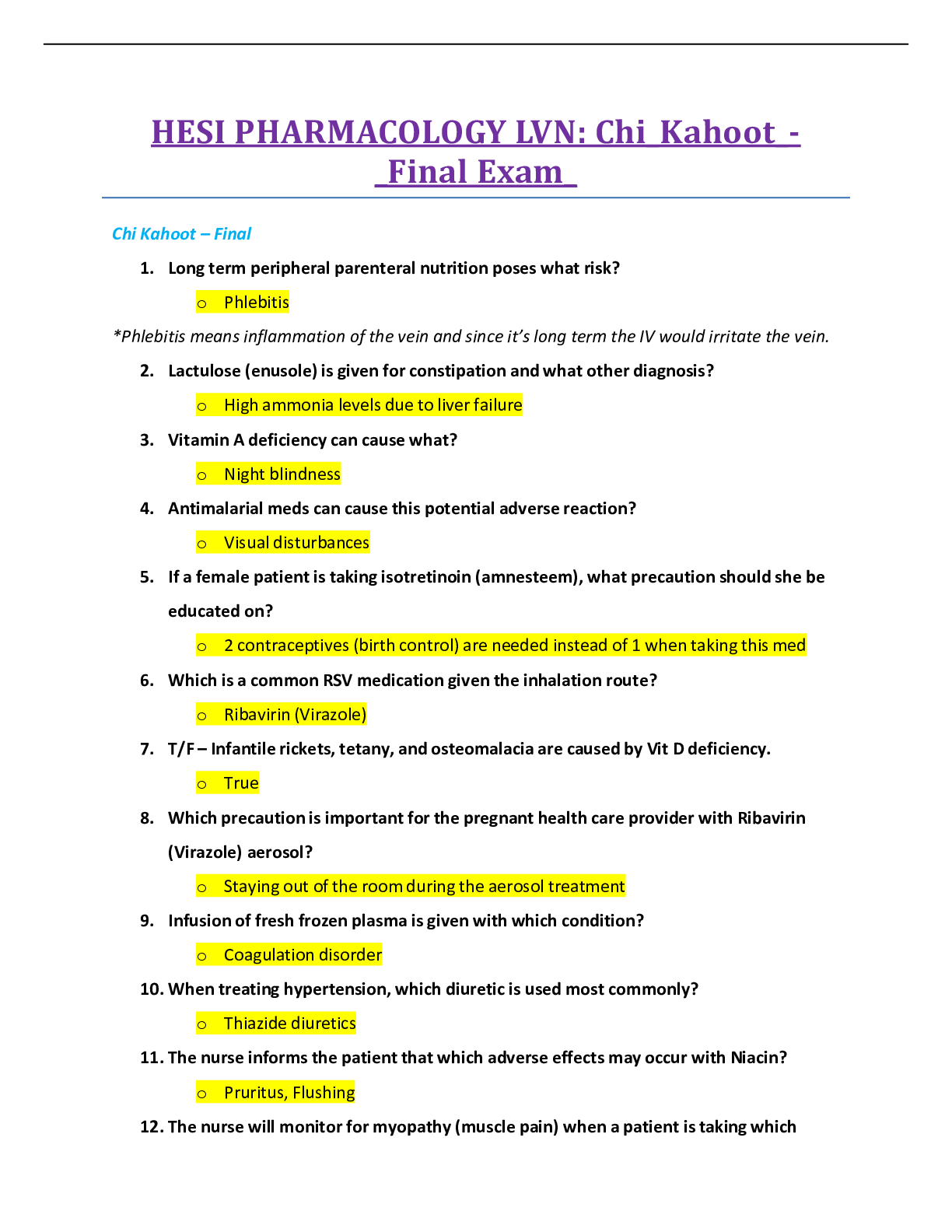
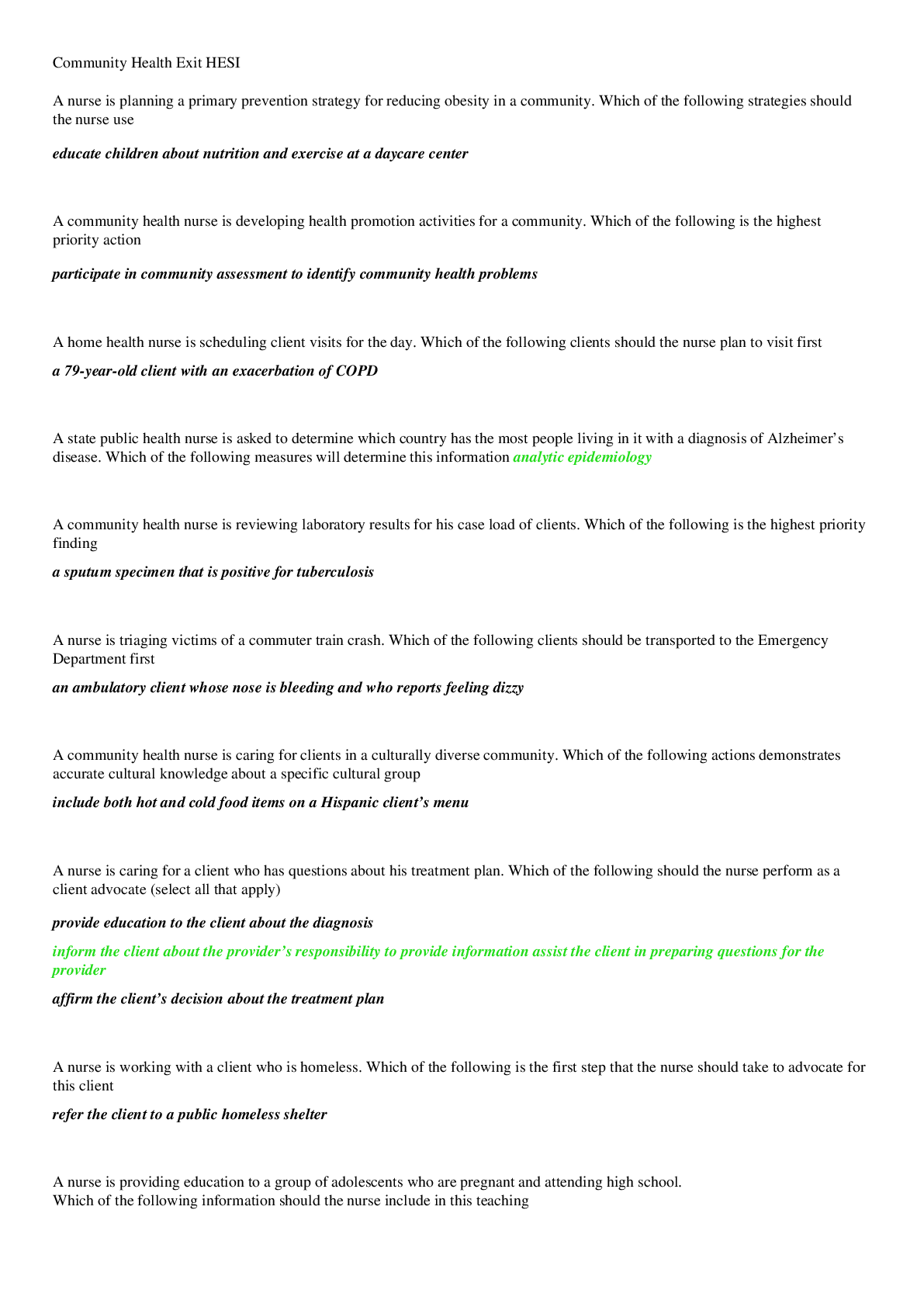


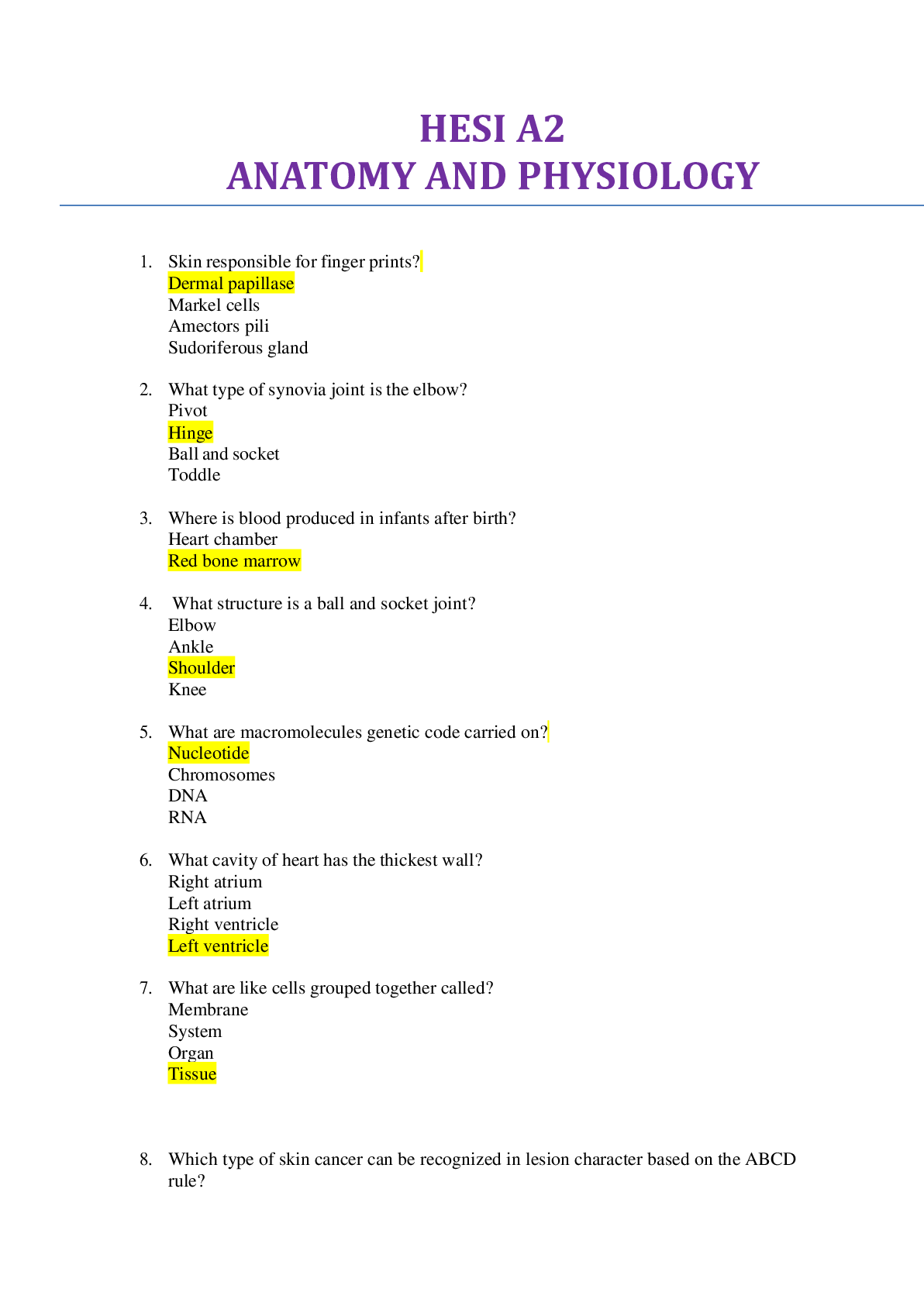
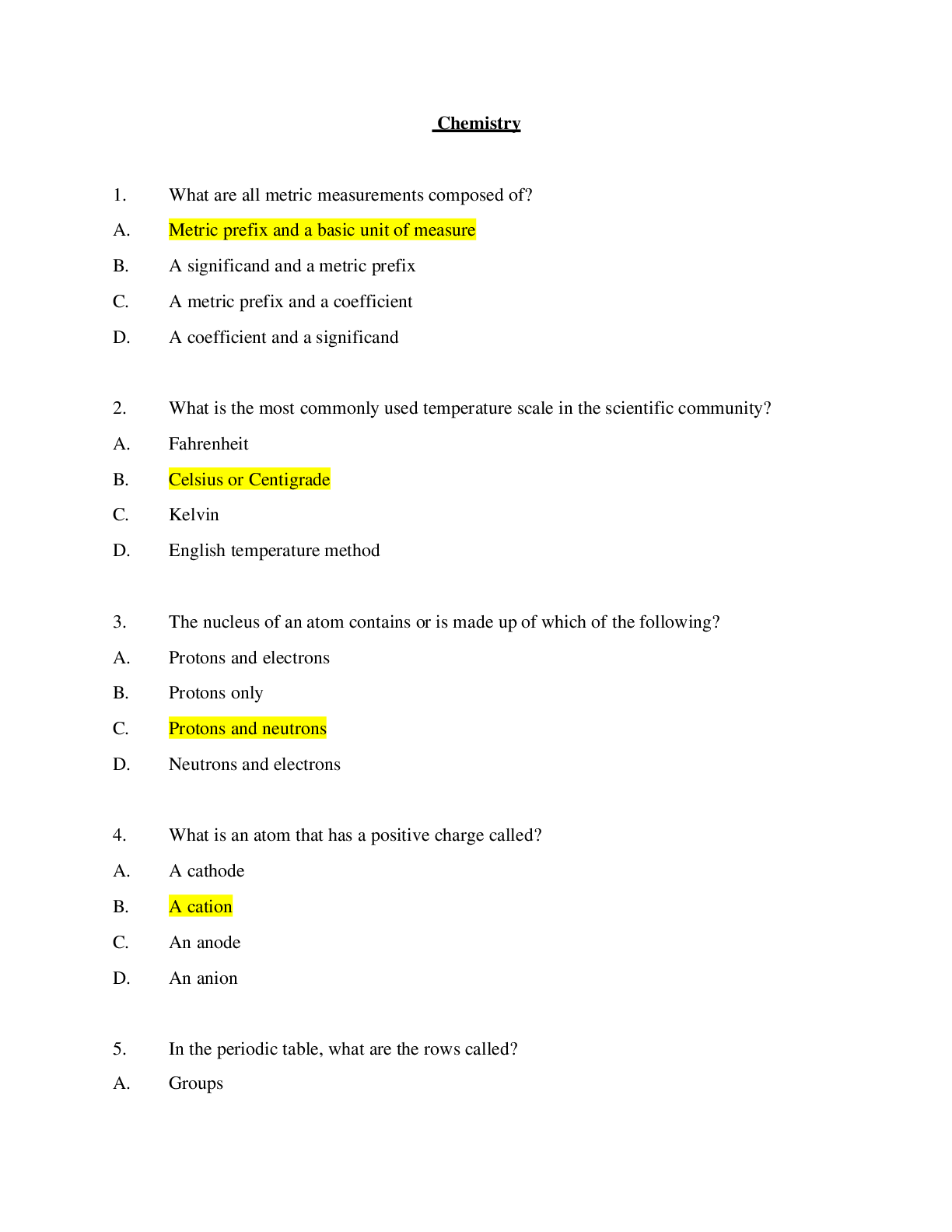
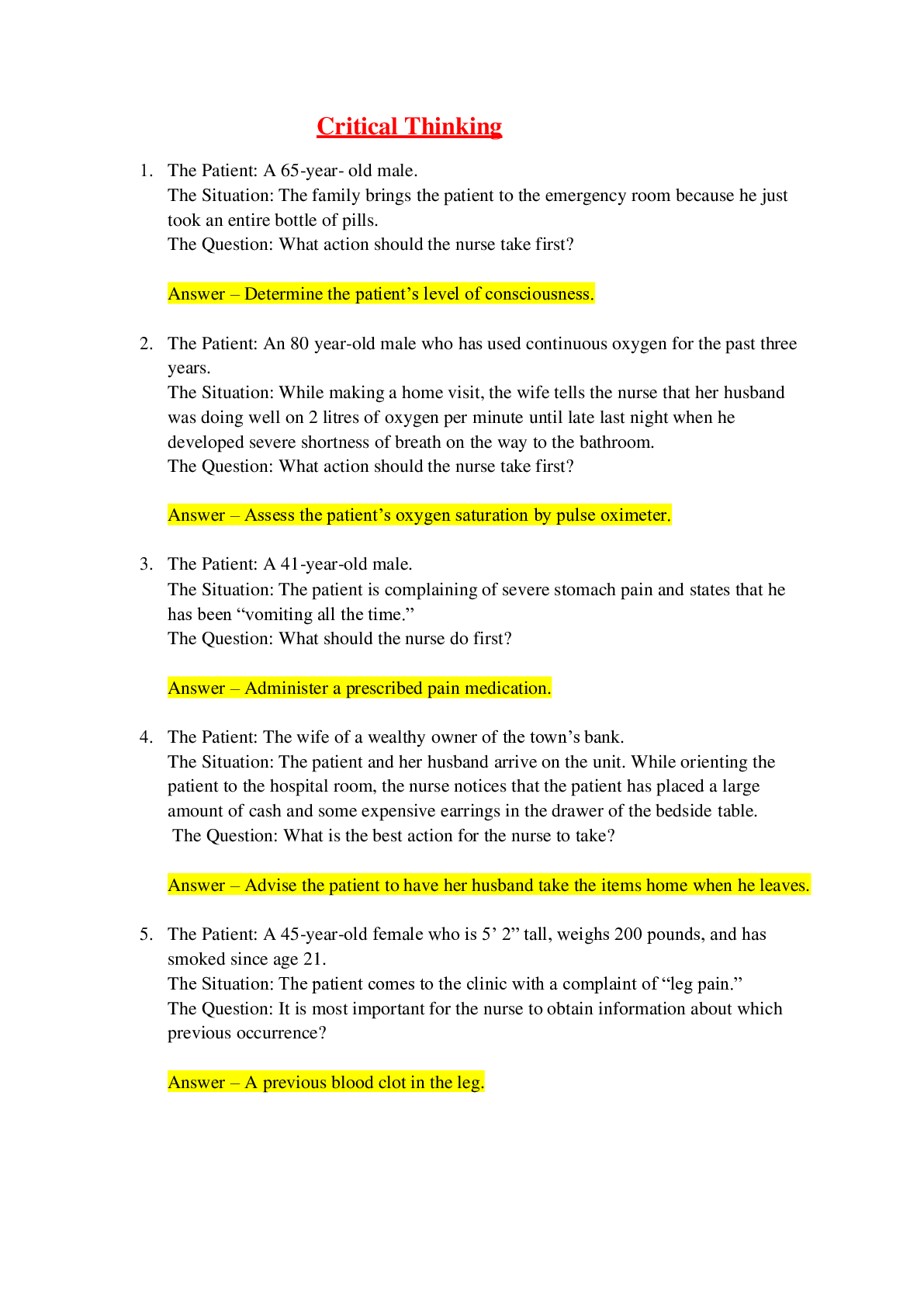
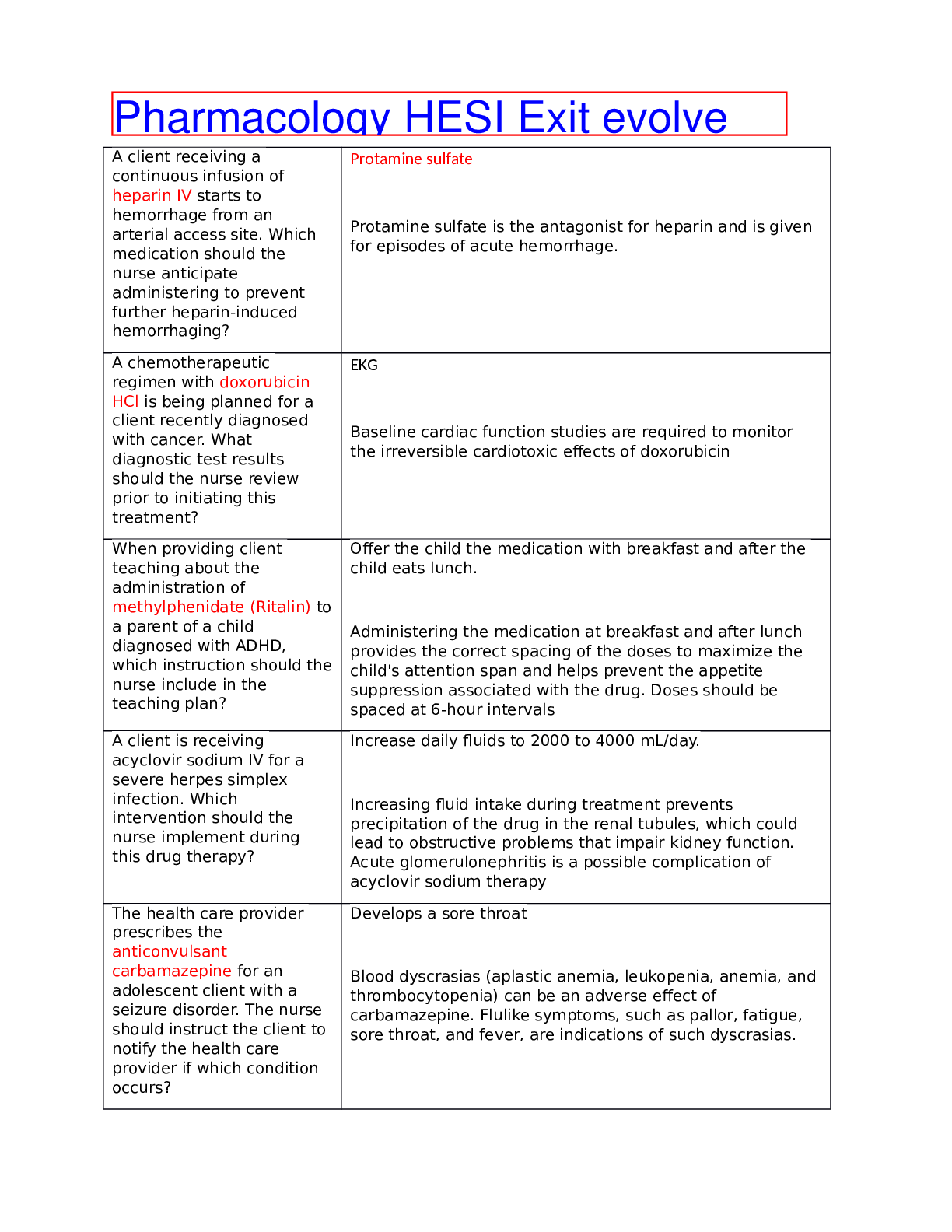
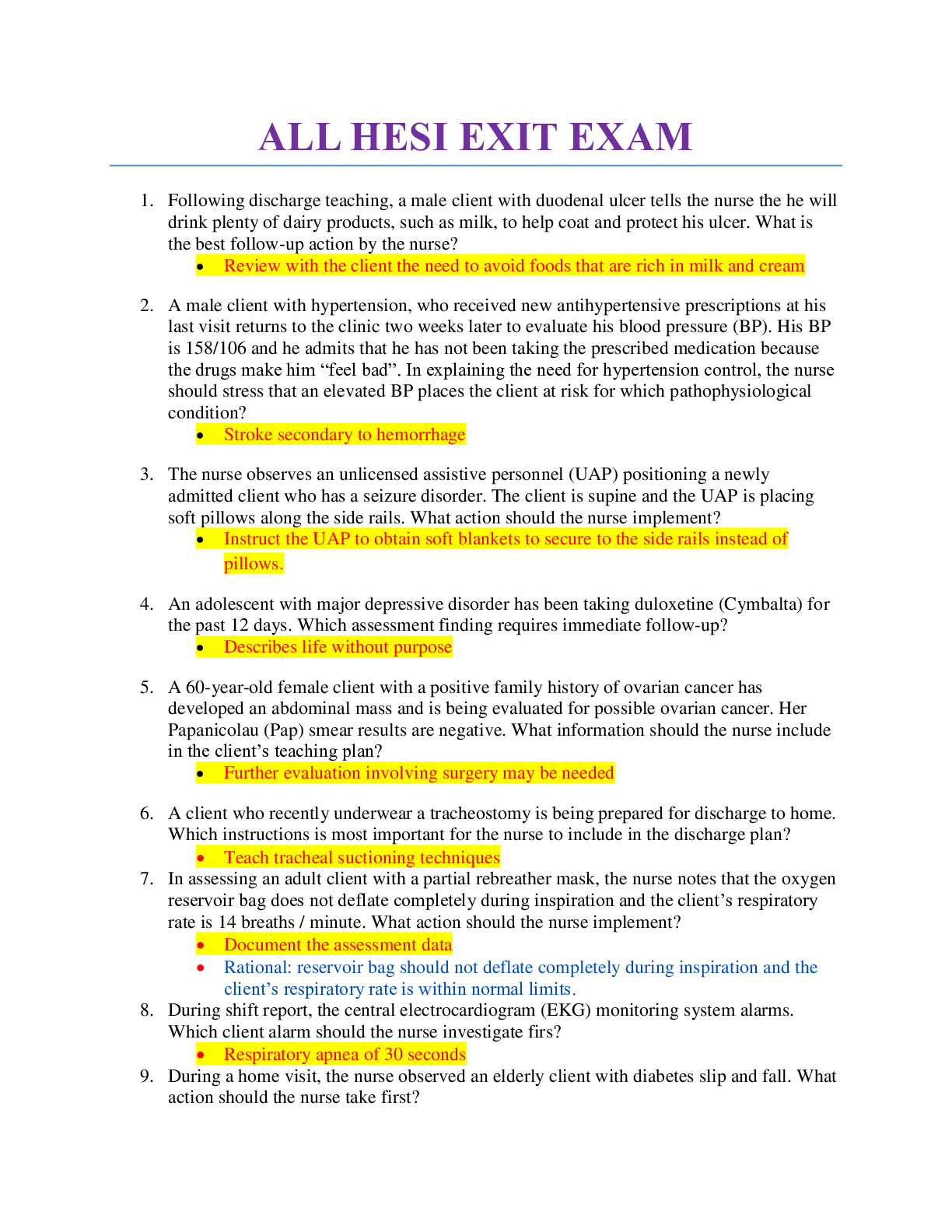

.png)
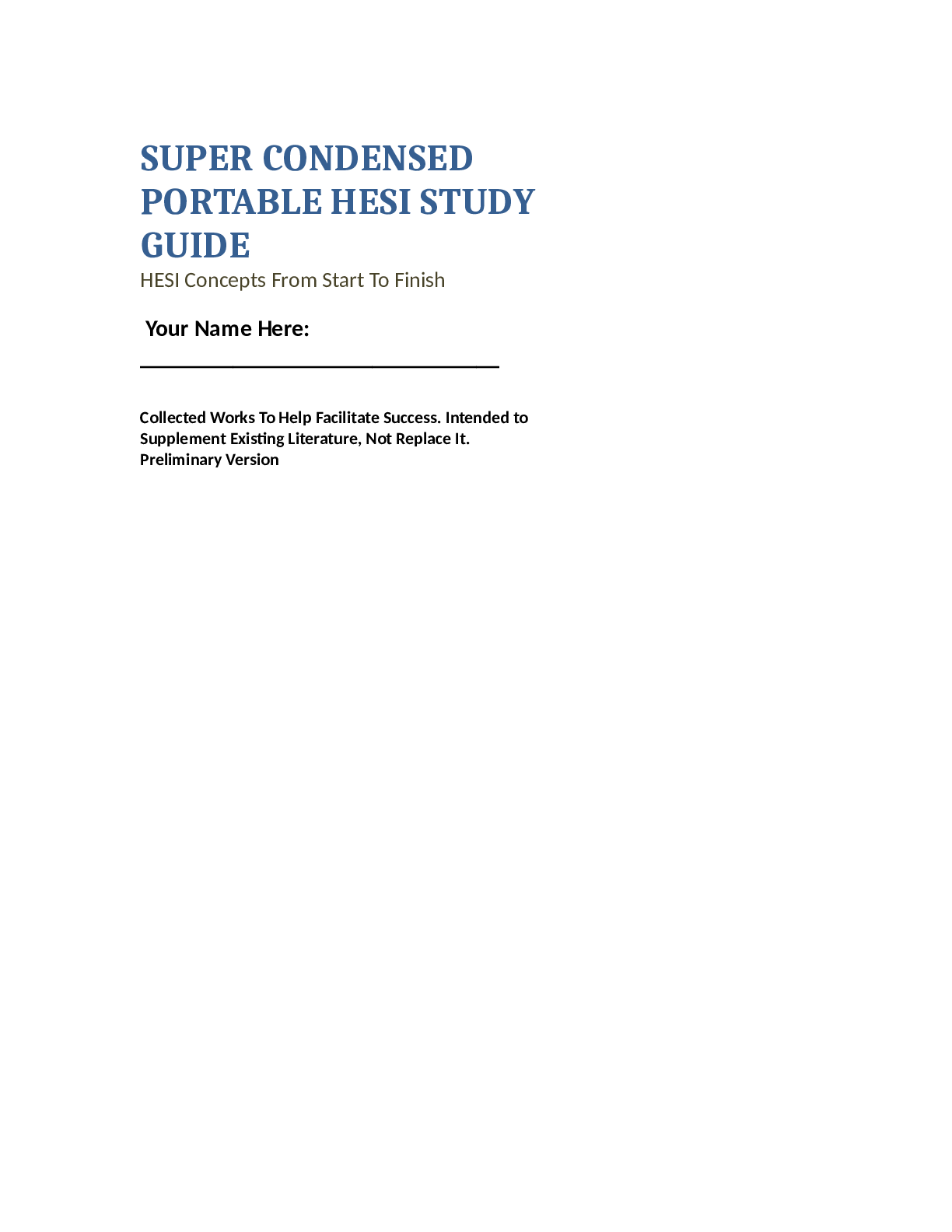




 (1).png)



